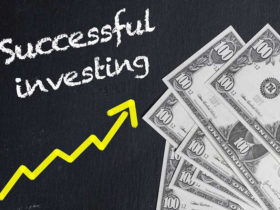Taking a look at your portfolio and your financial goals at least annually is always a great idea. With the economic recovery underway, it is more important than ever to ask your Financial Advisor the right questions before you set forth on a path for the next years to come.
Officially the recession is over, but as we creep toward what looks like a market recovery, investors are presented with new investment opportunities. When you discuss your investment goals and your portfolio with your Financial Advisor, consider asking questions that can help you understand the economic and market environment today and assess the steps you would need to take to move forward.
- Am I taking on enough risk, the right amount of risk, or too much risk?
The recent economic downturn has made many investors lower their exposure to risk and relatively riskier assets. Certainly, in 2008-2009, their concerns may have been justified, but now, as the economy begins to recover, investors may want to consider whether their conservative positions are really aligned with their expectations of future market trends and moreover their investment goals. In light of improving market conditions it may be sensible to re-evaluate your appetite for risk and your asset allocations to avoid standing on the sidelines as market opportunities arise. In times of market volatility, a major factor that contributes to the creation of market opportunities, it is especially important to review your portfolio with your Financial Advisor at least once per quarter. This will give you peace of mind at night while your sleep, and also help ensure that your investment portfolio and asset allocation continue to match your financial objectives.
- What can I do get back on track with my retirement savings and goals?
Regardless of where you stand relative to your target retirement goal, whether you are just about ready to retire or are already there, you need to know exactly how your retirement plan has been affected and what you can do to close the gaps in your current retirement plan – especially with respect to being able to cover your projected expenses with your projected income. Make sure to set time now and on a regular basis to have a conversation with your Financial Advisor about where you are and what you need to do to get back on track and achieve your retirement goals.
Planning for retirement includes a combination of systematic savings, investing, and spending. Depending on where you stand relative to your retirement goals, there may be many strategies that you can take advantage of to stay or get back on track. These can include accumulation strategies or even re-adjustment of how to spread your investment dollars across different assets and asset classes throughout the rest of your retirement years. For instance, people planning for retirement say a few years away can increase their rate of contributions to their employer-sponsored plans such as a 401(k), use catch-up contributions to increase funding into their IRA, or re-think their portfolio and asset allocation entirely. For example, they may want to move funds from investments that aren’t expected to recover soon into other asset classes or investments for increased diversification, such as high-quality dividend paying stocks or stocks that show strong growth potential. For those that are closer to retirement or are already retired, the focus should be around spending habits, managing taxes, and trying to strike a balance between meeting short-term income needs with long-term income needs. For instance, certain dividend-paying investments can provide retirees with short-term income streams necessary to cover their short-term expenses while also providing them with capital appreciation potential to make sure their funds last over the long-haul. Isakov Planning Group has a program called ProActive Retirement Framework that you and your Financial Advisor can utilize to balance out of these factors and design the rights set of investment strategies for you.
- Is my portfolio really diversified — or should I consider other sectors and asset classes?
Asset allocation is certainly the hallmark of sensible and prudent investing. Going back to the recent market downturn, diversified portfolio at large had relatively smaller performance drops than those that were help in concentrated positions in only a few asset classes. Make sure to review your asset allocation strategy with your Financial Advisor to make sure you have hedges in place in case of a sudden and violent market event. For instance, some investments did relatively well during the recent recession such as Treasuries and managed futures. So ask yourself if you have exposure to a broad range of asset classes, because it is the one of the greatest hedges against market volatility.
- How can I shift my portfolio to be prepared for unexpected cash flow needs?
Make sure not to tie up too many of your funds in illiquid investments. If most of your investments in your portfolio are held in hedge funds, private equity, non-traded reits and the like, you may find yourself in a very illiquid and unfavorable position once liquidity becomes a concern – say you need money for an emergency or an expense. At which point, you may be forced to sell out of these illiquid investments at the worst times to meet your short-term liquidity needs. Factor in your liquidity needs in advance so you may be prepared for unanticipated events such as a major expense, a crisis such as a job loss, or a major event such as business opportunity.
- Is the timing right to begin planning my philanthropic legacy?
Leaving a legacy may sound like an overwhelming task, but it can be quite simple – at least to start with. Explore charitable organizations that you feel most passionate about and discuss your goals with your Financial Advisor. There are many ways to have your portfolio prepare you to leave a lasting mark on the values you feel strongly about such as education or energy conservation. Basic techniques such as utilizing donor-advised funds, charitable remainder trusts, or family foundations can all set you on track to fulfilling your philanthropic goals.















